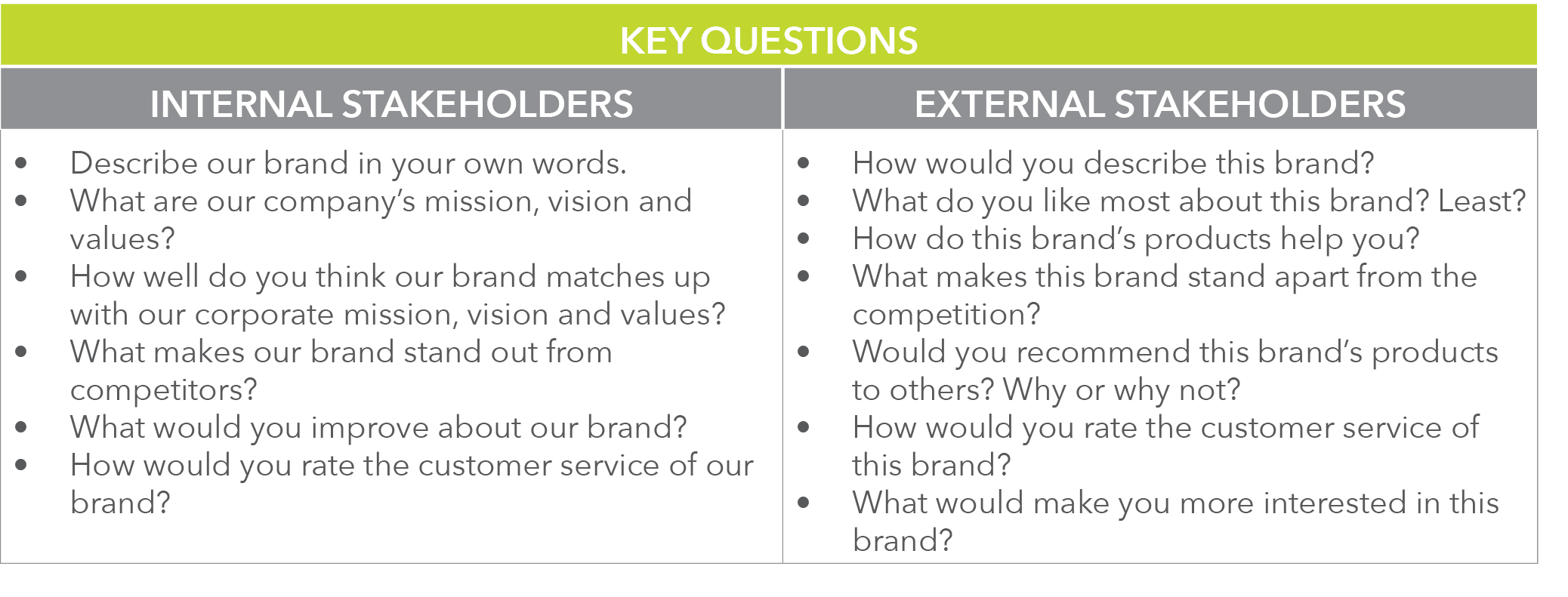What is an internal brand audit, and why do you need one?
An internal brand audit can help you understand how well your company’s brand is supporting your growth engine
Internal brand audits are essential for the long-term health of any organization. They provide a unique opportunity to step outside your own walls and understand how your target market truly perceives you.
For businesses that are experiencing rapid growth, getting their brand right is even more crucial to drive awareness and feed the growth engine. In fact, 77% of B2B marketers say branding is a crucial factor in maximizing future growth (Circle Research).
What is an internal brand audit?
An internal brand audit is an analysis that shows how your brand is perceived in the marketplace. It offers insights into your brand’s strengths and weaknesses and helps identify key areas for improvement.
We like to think of an internal brand audit as a health check-up for your brand. It helps you evaluate your own visual identity, digital presence, market positioning and key differentiators from the perspective of your potential buyers.
Why internal brand audits are essential
Many companies tend to neglect regular internal brand audits (we recommend an annual audit to maintain optimal brand health) because the results aren’t always positive. They may find their visual identity is inconsistent, or their brand promise no longer resonates with buyers.
But those fears demonstrate exactly why every company should conduct a regular internal brand audit. Just like an annual doctor’s office visit, an internal brand audit can help identify red flags before they start to cause bigger issues (like declining sales or reduced growth) down the road.
An internal brand audit can tell you what your target market loves about you and where they see the biggest opportunities for improvement. It can also help you understand how to maintain relevance and capitalize on the unique qualities that make you stand apart from the crowd.
Key benefits of an internal brand audit:
- Understand if your brand is consistent across channels
- Identify buyer needs and expectations
- Assess employee alignment with your brand
How to approach an internal brand audit
Before you get started on an internal brand audit, it’s important to plan what information you’ll collect, where you’ll get it, and how you’ll measure the results. These 5 steps will help you develop a framework for a successful audit.
1. Gather marketing assets
The evaluation of marketing assets is a key component of any internal brand audit. Heavy-hitting digital assets – like your website and social media channels – are essential. But don’t overlook opportunities to include other potential assets as well. Below is a list of items to consider.
2. Evaluate visuals and messaging
Once you’ve collected all the marketing assets, you’ll need to appraise them from both a design and messaging perspective. Below are some key elements you’ll want to evaluate.
Be sure to note where you see consistencies (or inconsistencies) across channels. Here are some key questions to ask:
- Are we telling a cohesive story, or is our key messaging fragmented or even contradictory?
- From a visual perspective, do our assets feel like they belong together in terms of the colors, imagery and design principles used? Or do they seem like they could be from different companies altogether?
- What common gaps or problems are we seeing in terms of design or messaging?
3. Analyze your marketing and sales data
Looking at your data will help you gauge how your audiences engage with your brand. When performed correctly, data analysis as part of your brand audit will help you detect content and visuals that perform better than others. And conversely, you’ll uncover what’s missing the mark. If your company has robust digital and social marketing analytics tools like Google Analytics or HubSpot, this will make your data analysis easier. If not, you may be limited in how much data you can gather. Here are some key metrics to consider evaluating for an internal brand audit.
4. Get insights from external AND internal stakeholders
Rich buyer and employee insights are often one of the most valuable outcomes of an internal brand audit. And while many companies tend to focus on buyer insights, we find that internal employee perspectives can be just as valuable.
We recommend starting with a survey to gather quantitative feedback from both internal and external stakeholders. Then you can follow up with individual interviews to collect richer qualitative data. Below are some key themes you’ll want to cover with stakeholders.
5. Review the results and create an action plan
Internal brand audits are essential for monitoring your long-term brand health. But they won’t be effective if the results sit languishing on a bookshelf in your office somewhere. Once you’ve completed your analysis, be sure to share your results with key leaders and stakeholders.
Then, develop an action plan to address your key gaps and opportunities. Determine your primary objectives, how you’ll measure success and who can help support the specific tasks needed to execute your plan. And finally, schedule next year’s audit so you can compare the results and see how much progress you’ve made.
Does taking on an internal brand audit sound like a lot of work?
To be honest, it is a lot of work! If you’re not equipped to dive into a full-fledged internal brand audit, we hear you and we can help!
Here at GrowthMode Marketing, we can help you build a brand strategy that grows your business. Contact us today to learn more.








